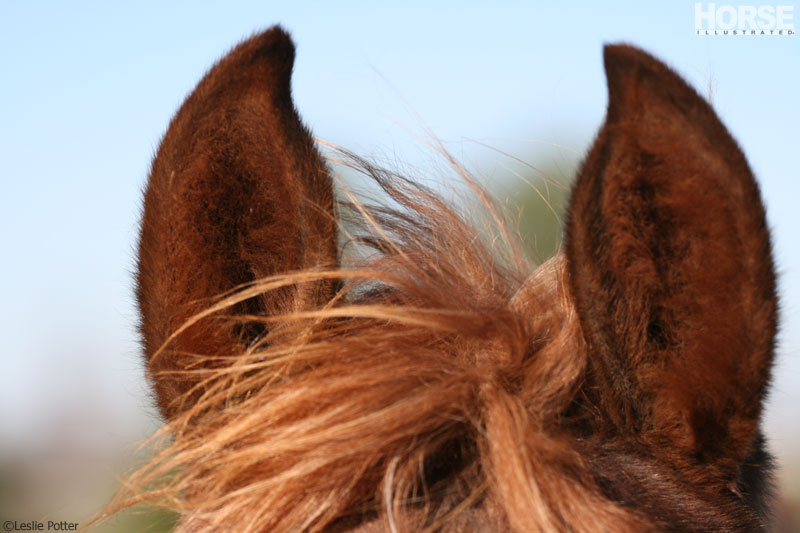Horses communicate with their ears. You already know this. But a recent study shows just how important the ears are in horse-to-horse communication.

Equine ear-based communication is among the first things taught to budding equestrians. New riders are taught that forward ears indicate alertness, ears pinned back are a sign of irritation, and a content horse will usually have relaxed, slightly sideways ears. Other horses certainly recognize these cues from their herdmates; a lower-ranking horse knows to move away from a more dominant equine when the ears go back.
However, rather than looking at how horses indicate their emotional state through ear position, the University of Sussex study focused on how horses communicate through “social attention.” Because horses are herd animals, they rely on information received from their companions to know where to feed, when to flee, et cetera. This study examined how horses receive that information.
The researchers took photographs of horses in a pasture looking toward a feed bucket and created life-sized prints. Preliminary experiments in which the equine test subjects’ reactions to the photographs were compared with their reactions to control photos were performed to ensure that the test subjects recognized the photos as horses.
For their experiment, the researchers set up two feed buckets in front of one of the photographs with a horse’s head pointing to one of the two buckets. Each horse in the study was individually led in and released to freely choose which bucket to eat from.
In some of the photos, the horse’s eyes or ears were obscured by a mask. The researchers discovered that removing those eye or ear cues had a significant impact on the horse’s behavior. Approximately 75% of the horses chose the bucket indicated by the horse in the photograph when none of the cues were obscured. That number dropped to below 60 percent when the eyes were covered by a mask, and to 50% when the ears were covered.
Previous research had suggested that primates are the only animals that use eye direction to communicate information, but this study provides some evidence that horses do, too. And while horse people know that those big ears can communicate a lot of information, this study is one of the few in the topic of animal communication to demonstrate just how important ear cues are.
Liked this article? Here’s more info on how horses communicate:
Horse Body Language
How Horses Identify Humans
How to Speak Horse
The eyes and ears are visual indicators of attention in domestic horses. Wathan, Jennifer et al. Current Biology, Volume 24 , Issue 15 , R677 – R679
Leslie Potter is the Senior Associate Web Editor for horseillustrated.com. Follow her on Twitter: @LeslieInLex






Another great article with more information we can learn from.
cool
That is fascinating! I knew about the eyes and ears but I didn’t know that horses would see 2D so well!